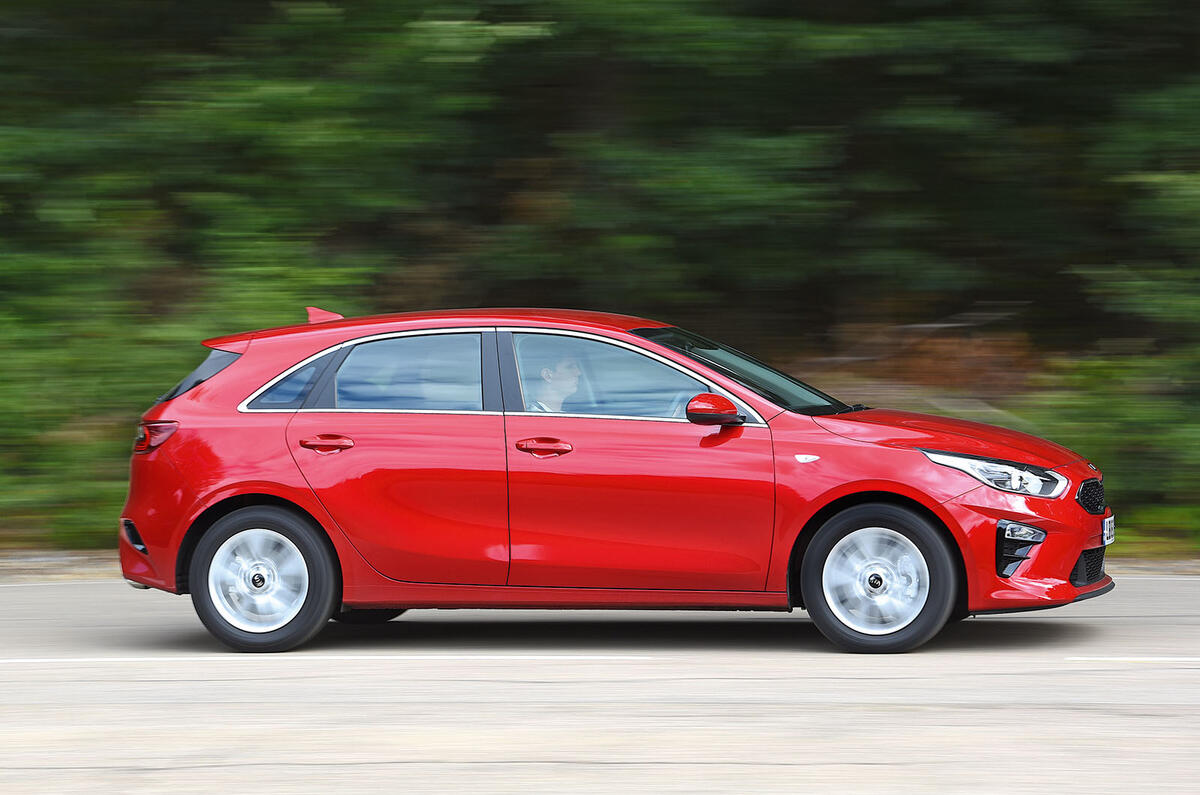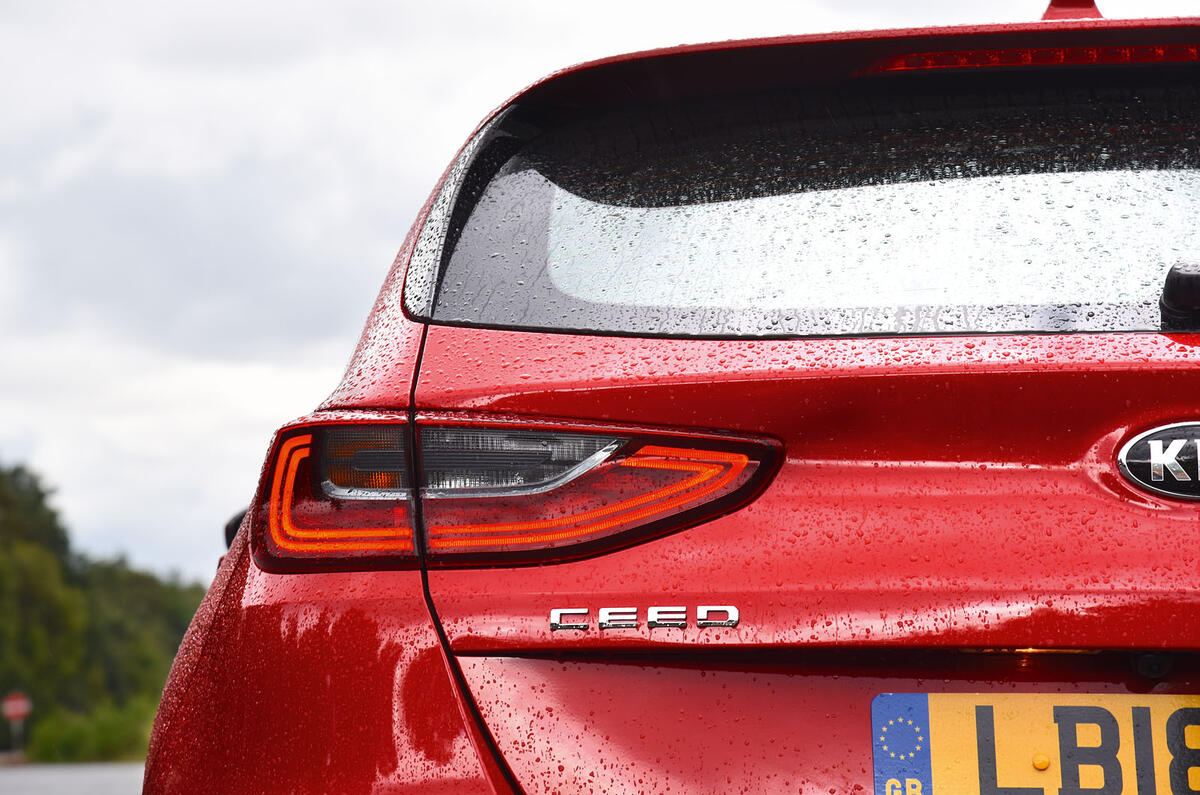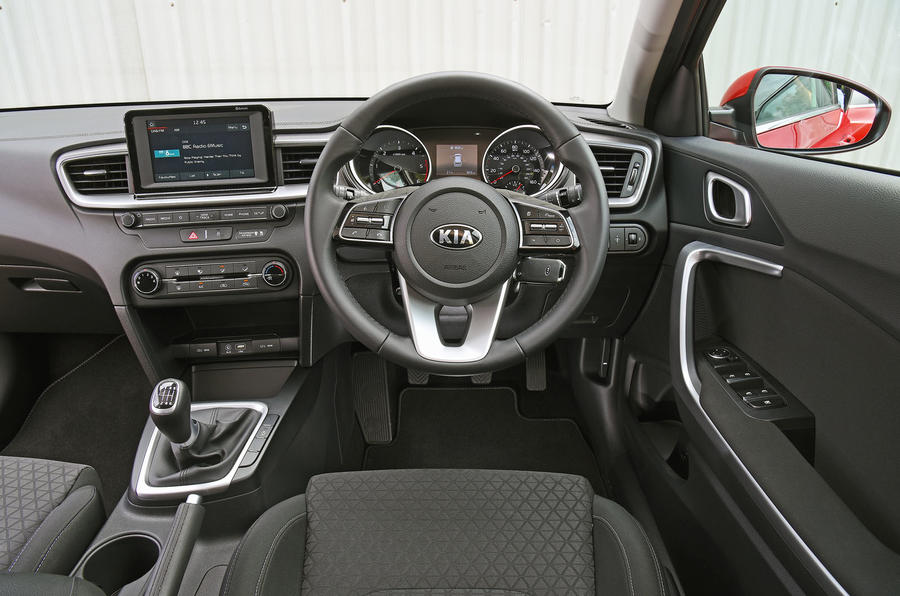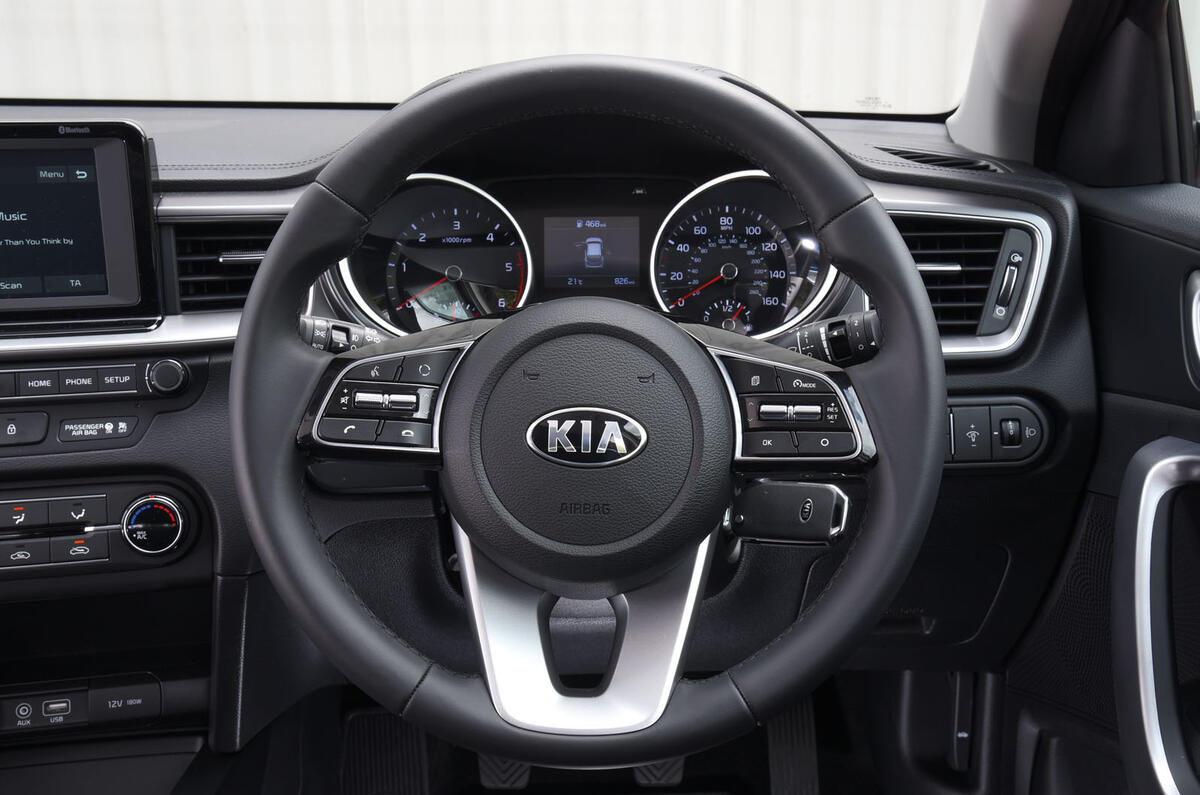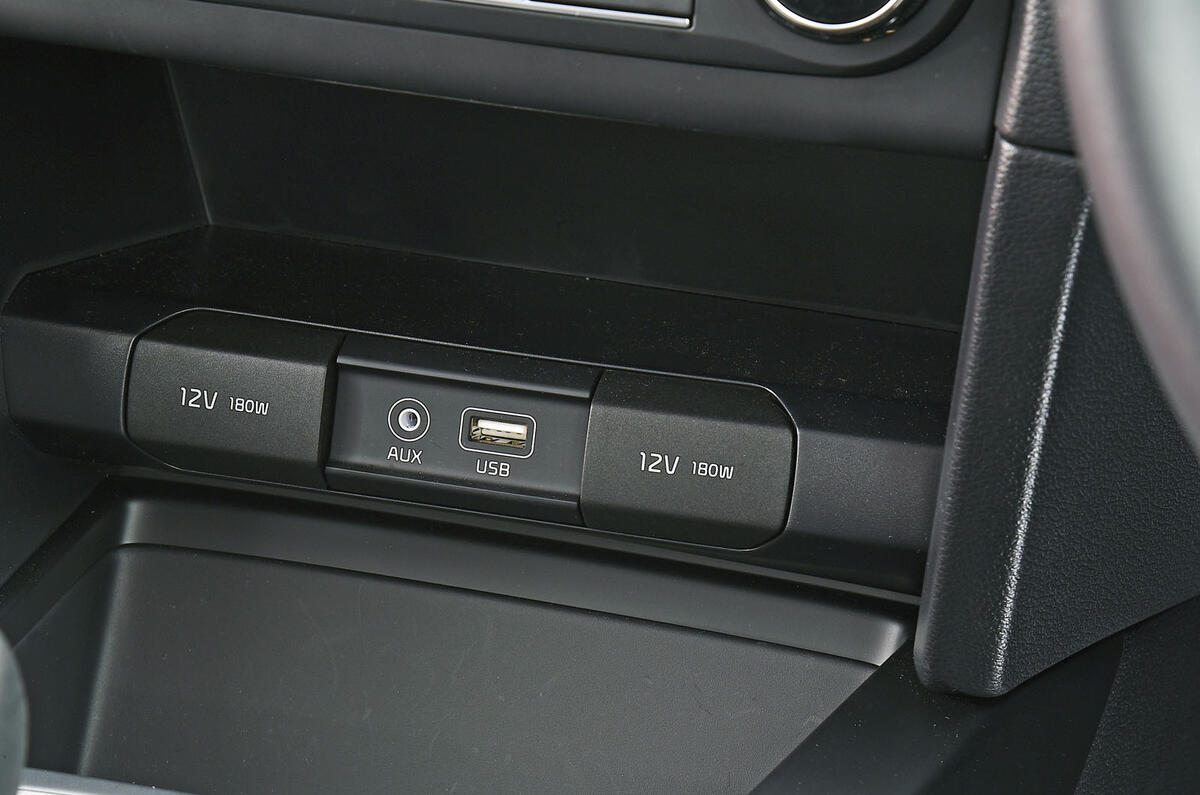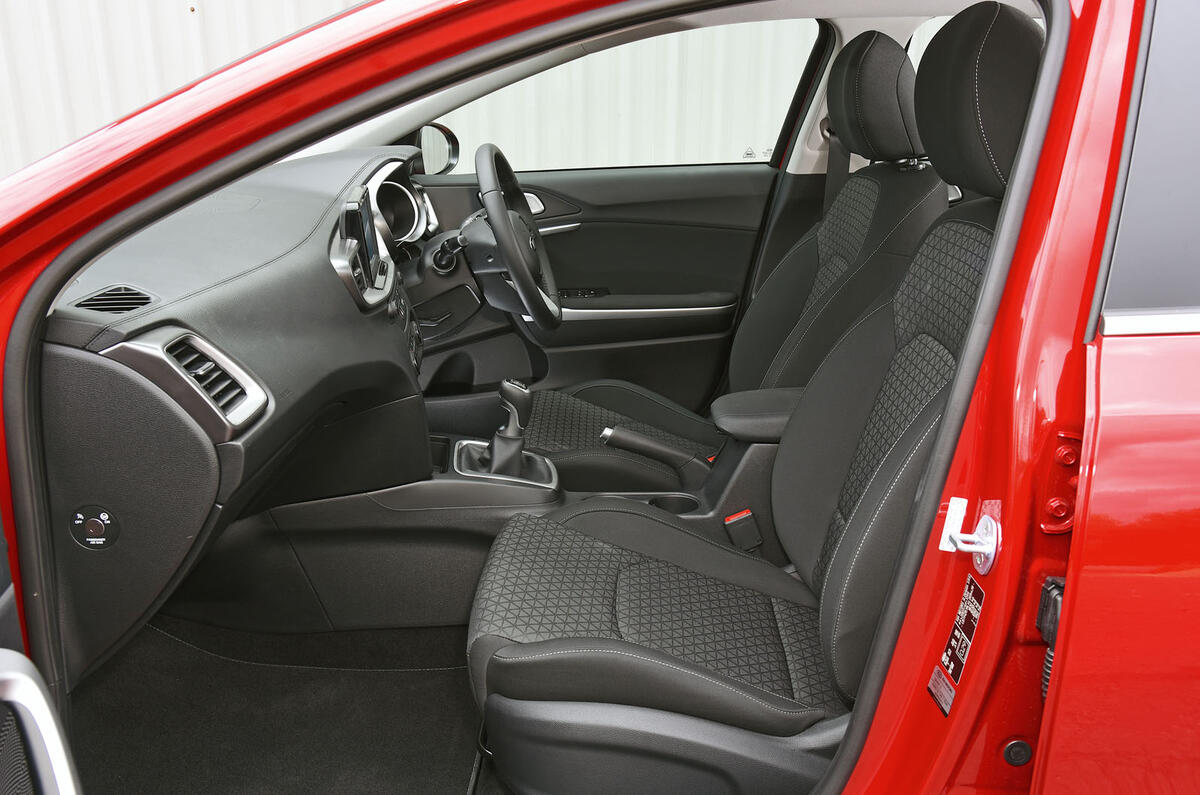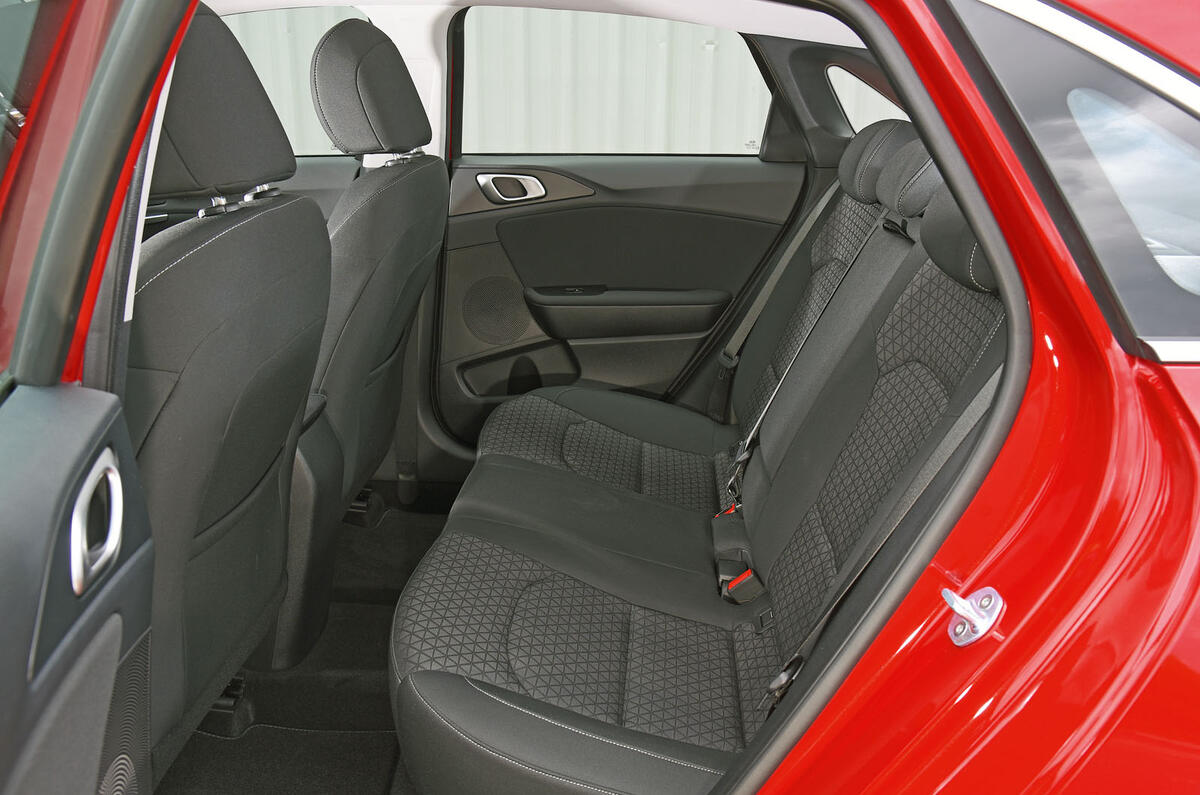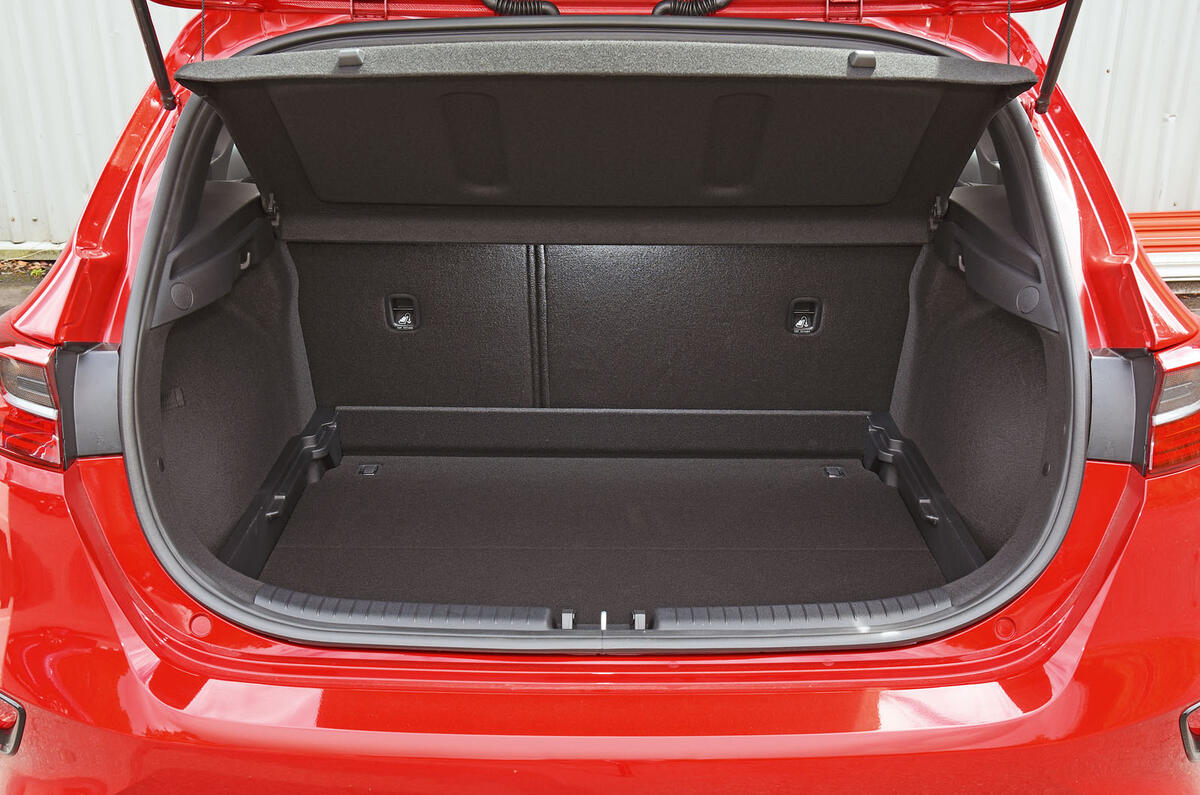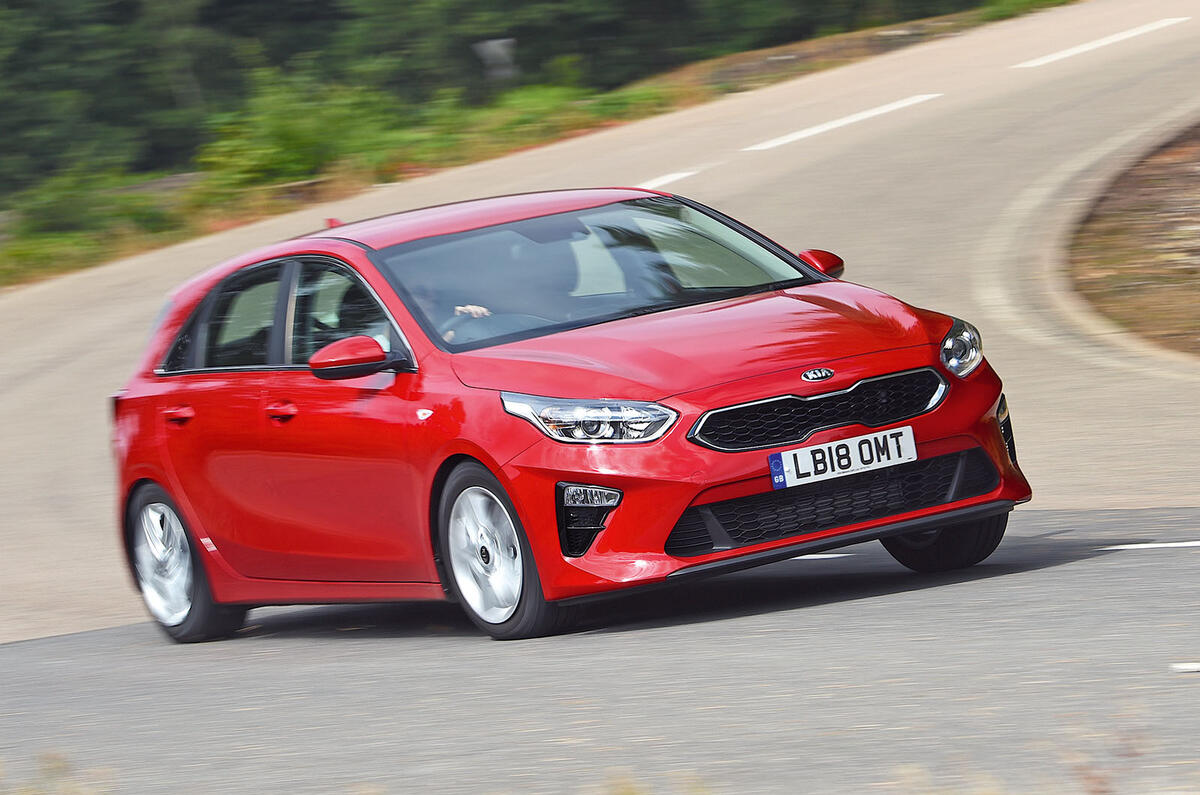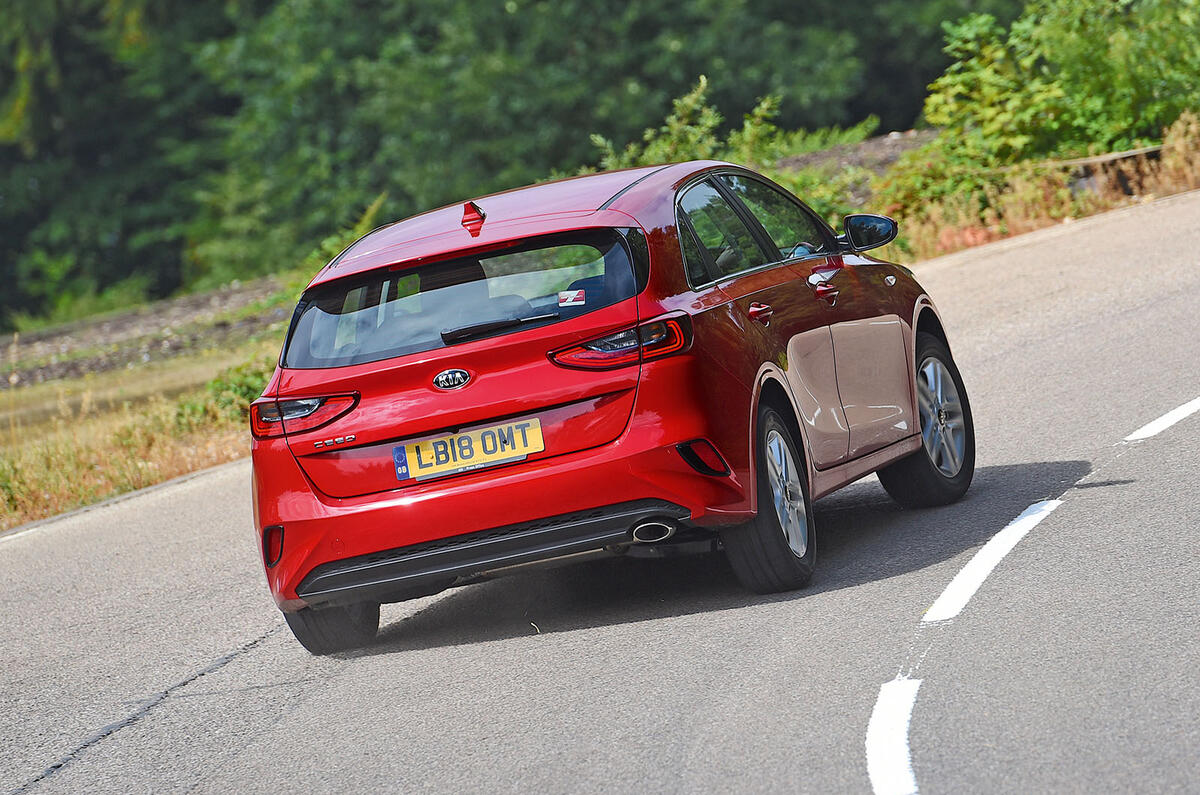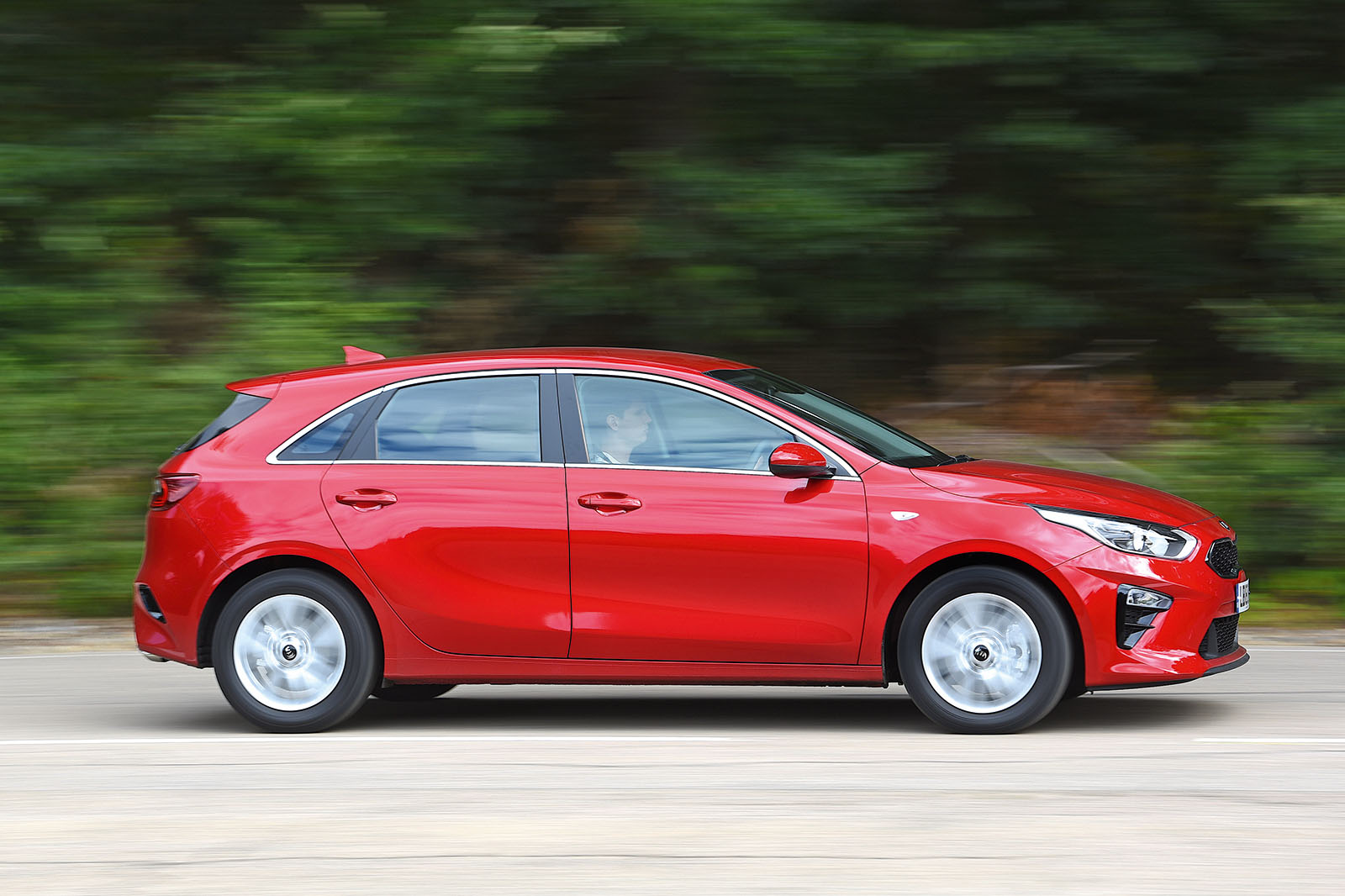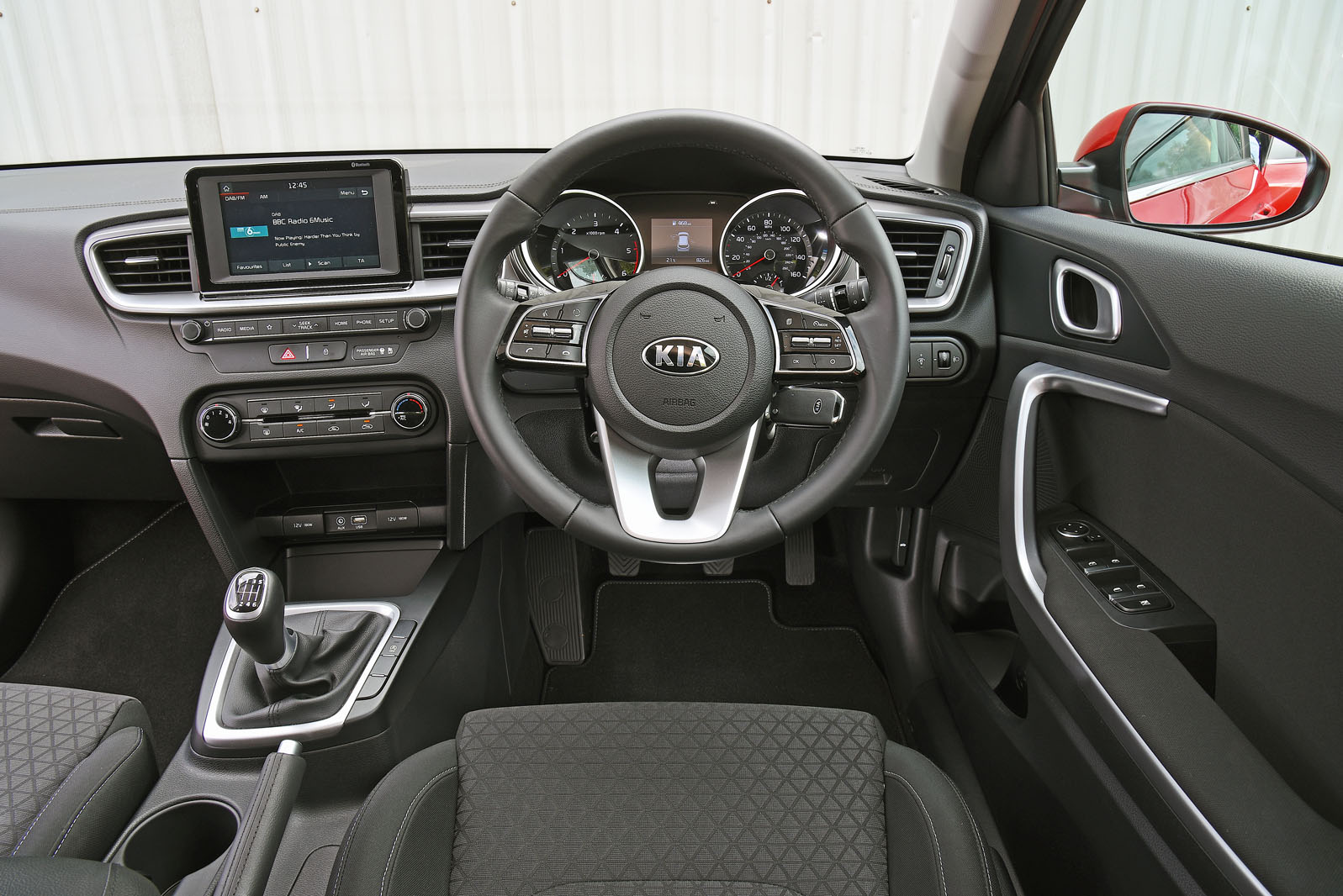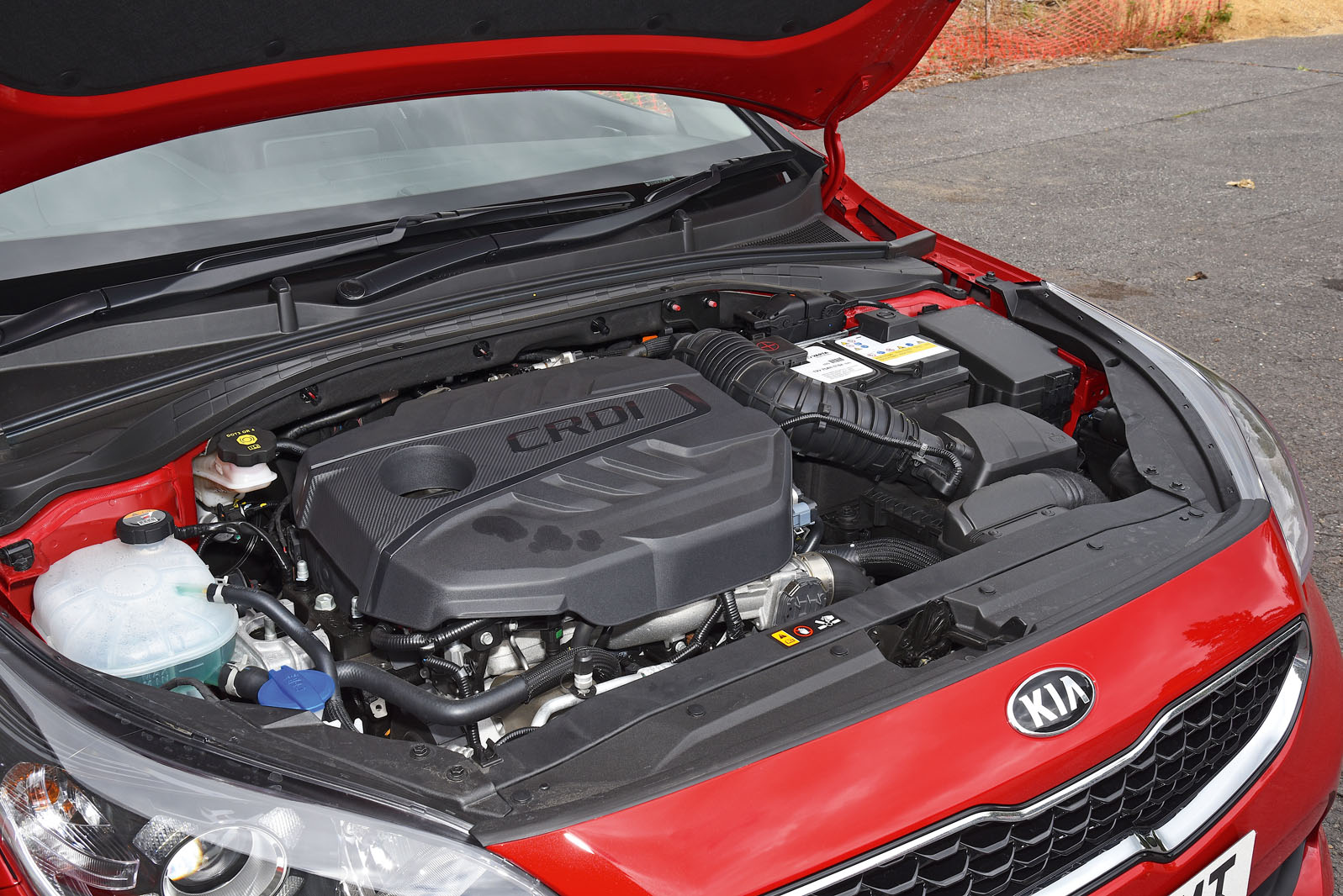In much the same way that you can get behind the wheel of any VW, cover up the badge on the steering boss and still know what you’re driving, the same is true for the new Ceed.
This interior’s mix of materials, its graphics, its infotainment system and the haptic feel of its switchgear all seem familiar; and none will do quite as much for the reputation of Kia in Europe as a Volkswagen Golf’s fixtures and fittings do for the standing of VW. That said, the Kia’s interior is attractive enough at eye level.
The 7.0in floating touchscreen that comes as standard with 2 specification crowns the dashboard in a neat and tidy fashion, and the various infotainment, heating and ventilation controls are integrated cleanly. The shiny soft-touch plastics on the dash top do an unconvincing impression of leather, though, the faux stitching in particular looking untidy; and in a place where a nicely grained slush-moulding would have been better.
Scan towards the footwell and some cheaper-looking materials come to the fore. Hard plastics are used on the lower door cards, the centre console and the lower dash, and the door bins aren’t lined, allowing loose items to rattle and slide around noisily inside them. Although features like these might be forgiven on a value-oriented family hatch, they will need to be addressed if Kia wants the reputation for quality that it has talked about targeting.
The touchscreen doesn’t feature any noticeable drastic change to its software or graphics compared with what we’ve seen in Kia’s other recent market debutants. Its menus are quite intuitive but its responsiveness and visual appeal could both be a touch sharper. As such, it lags behind Volkswagen’s Composition Media system but is on a par with Ford’s Sync3 set-ups.
At this level, you get DAB radio, USB and Bluetooth connectivity and a reversing camera fitted as standard. Sat-nav is not included, but Apple CarPlay and Android Auto, with their corresponding mapping apps, provide smartphone users with a perfectly suitable alternative. Those who prefer their Ceed to come fitted with its own navigation software will need to upgrade to the £21,995 Ceed 3 trim level, which also adds a larger, 8.0in screen.
The six-speaker sound system is powerful enough to satisfy the needs of your average punter, although audiophiles will probably find it ordinary.
The front seats are fairly large, comfortable and sensibly (but not overly deeply) bolstered, their cloth upholstery feeling a bit harsh to the touch but no doubt helping to hold your backside in place. The steering column adjusts for rake and reach and makes settling into your preferred driving position easy. Those in the back will find leg and head room are in relatively generous supply, too. The Ceed isn’t quite as accommodating as a Honda Civic or Skoda Octavia but yields to little else in the class on that front.
As for the boot, there’s 395 litres of space on offer (more than you’ll get in a Ford Focus or Golf), all of it accessed via a suitably large aperture. There is a reasonable lip to navigate, although the boot floor can be raised to make loading easier.



